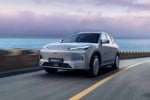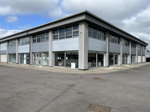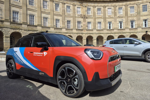Line-up
The hatchback was launched in 2001, while the much rarer saloon appeared in 2001. E has a height adjustable driver’s seat, radio/cassette, rear headrests; S adds a centre rear headrest, while Sport has front foglamps, 15in alloys, remote central locking, traffic information system.
SE adds to S trim with active front headrest and traffic information system; SE+ adds alloys, front foglights, leather-covered steering wheel, 6CD autochanger; Sport+ also gets 16in alloys. There are also a number of special editions, including Flare, Pulse and Twister.
Driving performance
Almera is surprising as it offers a good turn of speed; not what you’d expect from a hatch with such humdrum looks. It handles competently with light, precise steering and feels agile. The ride quality is a bit rough around town, but is comfortable elsewhere; cabin noise is at an acceptable level, too.
Comfort
Cars produced after October 2002 are significantly better than those produced before. Almera got a dash that’s similar to, although not as fiddly to use, as the Primera’s. Once mastered, it makes life behind the wheel much easier. The driver’s seat is comfortable and adjustable, and the steering wheel adjusts for height. Taller passengers will complain about rear legroom and rough ride over bumps when fully laden.
Engines
Most buyers plump for the 1.5 petrol, which manages around 42mpg in everyday driving. 1.8 is quicker, but its fuel consumption is much lower. The original 2.2 Di diesel ran from 2000-2003 and is underpowered and not economical enough, but the latest 2.2 dCi (bought-in from Renault) has more pulling power and is available with 112 and 136bhp.
Safety
Four-star Euro NCAP rating is a testament to Almera’s structural integrity, but ABS is only standard on some models. Immobilizer and deadlocks on all cars. Higher spec models get remote central locking and anti-hijack function.













Login to comment
Comments
No comments have been made yet.